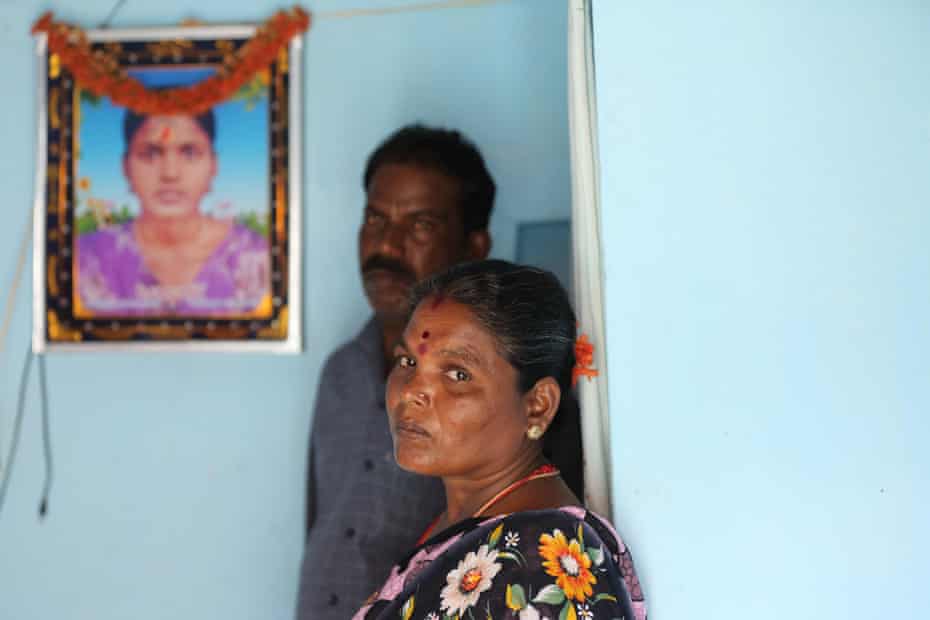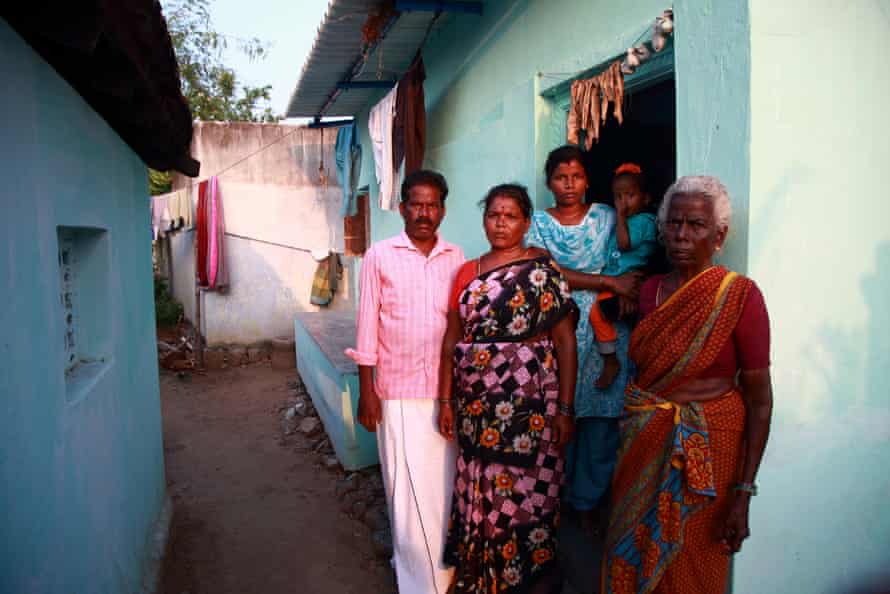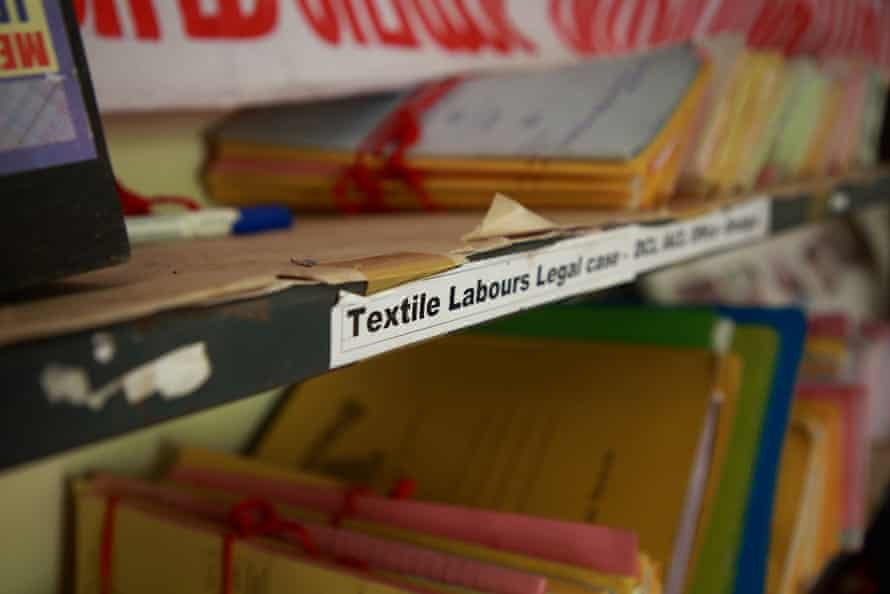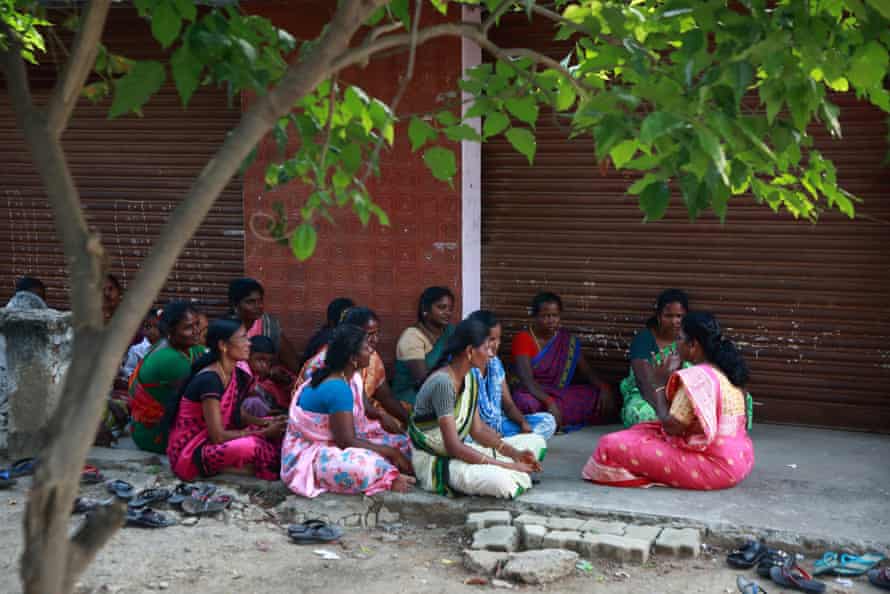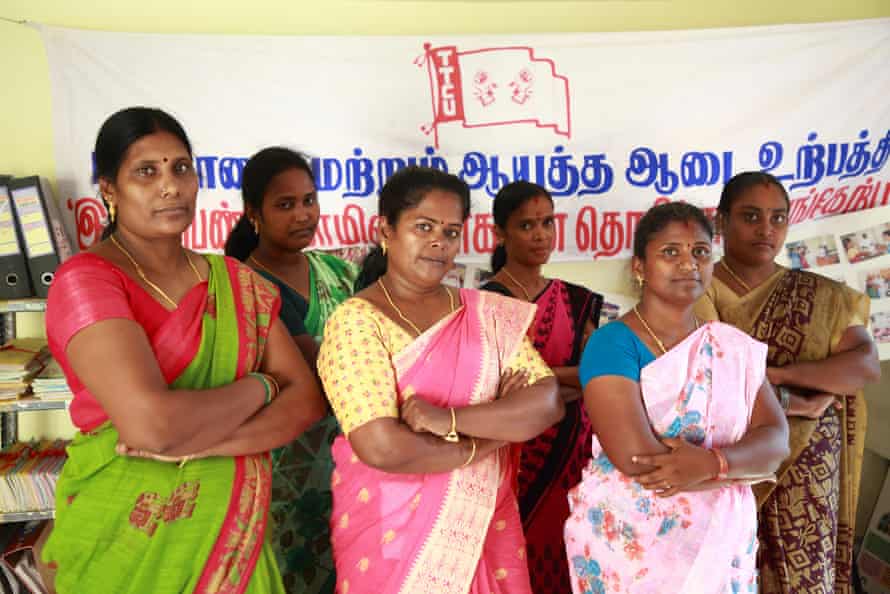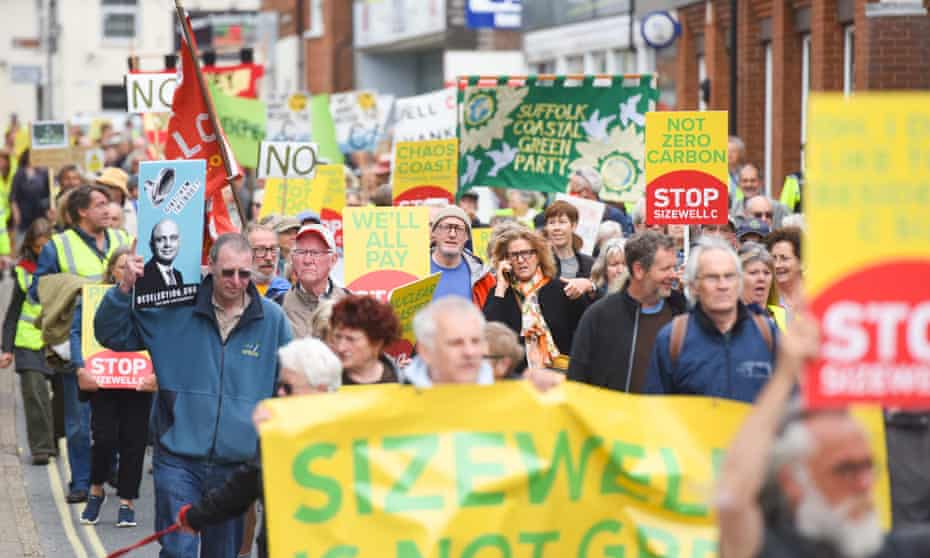When even young women join the actor’s male tormentors, ideas of justice soon begin to unravel

Amber Heard in court in Fairfax, Virginia, on 18 May 2022.
Photograph: Kevin Lamarque/AFP/Getty Images
Martha Gill
Sun 22 May 2022
The backlash to the #MeToo movement was always coming. We know this because a backlash has followed every single step forward feminists have ever made. This backlash was always going to be big, too. Not only did #MeToo threaten a status quo that props up powerful men, it threatened these men personally, and – as it seemed to some – with reckless caprice.
“If somebody can be brought down by accusations like this,” a White House lawyer said shortly after Christine Blasey Ford’s allegations against Brett Kavanaugh were made public, “then you, me, every man certainly should be worried.”
It wasn’t just men who were worried. The idea that systems that previously treated only women, minorities and lower-class men unfairly might be capable of doing the same to high-status men was deeply unsettling to everyone.
After all, when a man is treated badly it lands with a double sense of burning injustice. Women’s stories of woe are so common that they can leave us comparatively unfazed. We feel bad, but we already know women are treated unfairly. It is priced in. “[Women’s stories were] all the same story, which is not to say it wasn’t important. But it was boring,” writes Taffy Brodesser-Akner in her novel Fleishman Is in Trouble. “The first time I interviewed a man, I understood we were talking about something more like the soul.” When something bad happens to a powerful man, it has not happened to a statistic. It has happened to a human soul.
Female accusers are still routinely treated as if they are lying, both by the public and the courts
For these reasons, #MeToo struck many men – and women – as deeply unfair. Yet it was merely an attempt to correct a bias that still exists. Female accusers are still routinely treated as if they are lying, both by the public and the courts – more so than other alleged victims of crime. It took the testimony of more than a hundred women to bring down Harvey Weinstein. Brett Kavanaugh was not brought down.
The public reaction to the Johnny Depp and Amber Heard trial is what a #MeToo backlash looks like. Here are the facts of the case. Depp is suing Heard for defamation after she described herself in a 2018 article that didn’t mention him as a “public figure representing domestic abuse”. Depp says he is innocent of abuse and her statement amounts to lying. On his side are two facts that seem clear. Heard promised to donate her entire divorce settlement to charity, and didn’t. There is a recording in which she admits to hitting Depp.
On Heard’s side is the following evidence. Depp admits to head-butting his ex-wife (by accident), and there are texts from his assistant alleging he kicked Heard. There are texts from Depp to Paul Bettany saying he wanted to kill Heard and rape “her burnt corpse”. There is a recording of Depp shouting at Heard for speaking in an “authoritative” way to him. She was awarded a domestic violence restraining order in 2016. In 2018 Depp sued the Sun newspaper for libel after it called him “a wife beater”. He lost the case after the judge found 12 of 14 alleged incidents of Depp’s abuse of Heard to be true.
The idea that Heard is a manipulator, a fantasist and an abuser herself has caught fire across all social media
The court will decide whether or not Heard is a liar. But the idea that Heard is a manipulator, a fantasist and an abuser herself has caught fire across all social media, and some more traditional outlets. Every sexist trope ever used to humiliate and discredit female accusers has been deployed against her at vast scale. Re-enacting her testimony of rape and abuse has become a game on TikTok. She has been mocked by Saturday Night Live, and by Chris Rock (“Believe all women, except Amber Heard”) and ’N Sync’s Lance Bass.
Heard’s tormentors, many of them young women, do not seem to see themselves as anti-feminist. They believe women, of course – just not this one.
It is not they who are damaging #MeToo, it is Heard – by virtue of being an imperfect victim.
They perhaps forget that the project of #MeToo – the whole point – was to help imperfect victims. Those who were wearing the wrong thing, or were drunk, or were promiscuous, or loved their perpetrator, or had previously broken the law, or had lied before, or had a bad character, or seemed “a little bit nutty and a little bit slutty”, as David Brock once memorably described Anita Hill, who testified during Clarence Thomas’s US supreme court confirmation hearings in 1991. In fact, perfect victims have never needed feminism, partly because they barely exist.
Whether or not Heard’s accusers fully realise it then, setting up “bad” victims in opposition to “genuine” ones is a very effective method of unpicking #MeToo. It is only the rare misogynist who outright admits they don’t believe women. Their objection has always been just to this one bitch, who is lying.
#MeToo (the clue’s in the name) attempted to combat this by linking experiences – all those bitches who weren’t believed – so we could see the pattern. In fact, you could say the whole project of feminism is about taking bad things that happened to women, which they thought only happened to them, or were their fault, and calling them by one name. Divide us back into unlinked individuals who might be lying, and the movement is lost.
#MeToo is often framed as having uncovered truths about the world – its success was because women “explained really clearly” what was going on. No. People already knew what was going on. #MeToo worked for the reason any feminist movement works: strength in numbers. It is a political movement pushing against incredibly strong forces in the other direction. There’s no reason to think its work cannot be rolled back.
Martha Gill is a political journalist and former lobby correspondent
Sun 22 May 2022
The backlash to the #MeToo movement was always coming. We know this because a backlash has followed every single step forward feminists have ever made. This backlash was always going to be big, too. Not only did #MeToo threaten a status quo that props up powerful men, it threatened these men personally, and – as it seemed to some – with reckless caprice.
“If somebody can be brought down by accusations like this,” a White House lawyer said shortly after Christine Blasey Ford’s allegations against Brett Kavanaugh were made public, “then you, me, every man certainly should be worried.”
It wasn’t just men who were worried. The idea that systems that previously treated only women, minorities and lower-class men unfairly might be capable of doing the same to high-status men was deeply unsettling to everyone.
After all, when a man is treated badly it lands with a double sense of burning injustice. Women’s stories of woe are so common that they can leave us comparatively unfazed. We feel bad, but we already know women are treated unfairly. It is priced in. “[Women’s stories were] all the same story, which is not to say it wasn’t important. But it was boring,” writes Taffy Brodesser-Akner in her novel Fleishman Is in Trouble. “The first time I interviewed a man, I understood we were talking about something more like the soul.” When something bad happens to a powerful man, it has not happened to a statistic. It has happened to a human soul.
Female accusers are still routinely treated as if they are lying, both by the public and the courts
For these reasons, #MeToo struck many men – and women – as deeply unfair. Yet it was merely an attempt to correct a bias that still exists. Female accusers are still routinely treated as if they are lying, both by the public and the courts – more so than other alleged victims of crime. It took the testimony of more than a hundred women to bring down Harvey Weinstein. Brett Kavanaugh was not brought down.
The public reaction to the Johnny Depp and Amber Heard trial is what a #MeToo backlash looks like. Here are the facts of the case. Depp is suing Heard for defamation after she described herself in a 2018 article that didn’t mention him as a “public figure representing domestic abuse”. Depp says he is innocent of abuse and her statement amounts to lying. On his side are two facts that seem clear. Heard promised to donate her entire divorce settlement to charity, and didn’t. There is a recording in which she admits to hitting Depp.
On Heard’s side is the following evidence. Depp admits to head-butting his ex-wife (by accident), and there are texts from his assistant alleging he kicked Heard. There are texts from Depp to Paul Bettany saying he wanted to kill Heard and rape “her burnt corpse”. There is a recording of Depp shouting at Heard for speaking in an “authoritative” way to him. She was awarded a domestic violence restraining order in 2016. In 2018 Depp sued the Sun newspaper for libel after it called him “a wife beater”. He lost the case after the judge found 12 of 14 alleged incidents of Depp’s abuse of Heard to be true.
The idea that Heard is a manipulator, a fantasist and an abuser herself has caught fire across all social media
The court will decide whether or not Heard is a liar. But the idea that Heard is a manipulator, a fantasist and an abuser herself has caught fire across all social media, and some more traditional outlets. Every sexist trope ever used to humiliate and discredit female accusers has been deployed against her at vast scale. Re-enacting her testimony of rape and abuse has become a game on TikTok. She has been mocked by Saturday Night Live, and by Chris Rock (“Believe all women, except Amber Heard”) and ’N Sync’s Lance Bass.
Heard’s tormentors, many of them young women, do not seem to see themselves as anti-feminist. They believe women, of course – just not this one.
It is not they who are damaging #MeToo, it is Heard – by virtue of being an imperfect victim.
They perhaps forget that the project of #MeToo – the whole point – was to help imperfect victims. Those who were wearing the wrong thing, or were drunk, or were promiscuous, or loved their perpetrator, or had previously broken the law, or had lied before, or had a bad character, or seemed “a little bit nutty and a little bit slutty”, as David Brock once memorably described Anita Hill, who testified during Clarence Thomas’s US supreme court confirmation hearings in 1991. In fact, perfect victims have never needed feminism, partly because they barely exist.
Whether or not Heard’s accusers fully realise it then, setting up “bad” victims in opposition to “genuine” ones is a very effective method of unpicking #MeToo. It is only the rare misogynist who outright admits they don’t believe women. Their objection has always been just to this one bitch, who is lying.
#MeToo (the clue’s in the name) attempted to combat this by linking experiences – all those bitches who weren’t believed – so we could see the pattern. In fact, you could say the whole project of feminism is about taking bad things that happened to women, which they thought only happened to them, or were their fault, and calling them by one name. Divide us back into unlinked individuals who might be lying, and the movement is lost.
#MeToo is often framed as having uncovered truths about the world – its success was because women “explained really clearly” what was going on. No. People already knew what was going on. #MeToo worked for the reason any feminist movement works: strength in numbers. It is a political movement pushing against incredibly strong forces in the other direction. There’s no reason to think its work cannot be rolled back.
Martha Gill is a political journalist and former lobby correspondent
